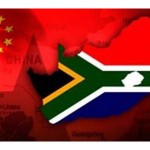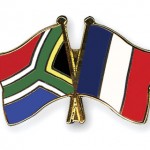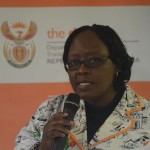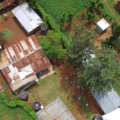Free trade deal could boost trade, investment in Africa.
Cape Town- A grand free trade agreement among African states – under discussion next weekend –could boost intra-continental trade and investment.
The Southern African Development Community (SADC), the East African Community (EAC) and the Common Market for East African States (Comesa) are to meet in Pretoria on June 11 and 12 to discuss the idea of a tripartite free trade agreement (FTA) first mooted three years ago.
But, while South Africa’s Minister of Trade and Industry Rob Davies, and some trade analysts believe such an agreement, along with work on several trade corridors in and around southern Africa, will boost trade and investment on the continent, some trade experts are of the opinion that Africa is not ready for such a deal.
“What the combined FTA will do, is it will create a larger regional market where we can operate in those 26 countries with a combined GDP (gross domestic product) of $833 billion and 530 million people,” said Davies this week.
SADC has a partial free trade agreement which has been implemented since 2008 that allows for goods to be traded across member countries either at zero or very low tariffs, but Davies said these tariffs only applied in SADC and not between the three communities.
Though he declined to reveal South Africa’s approach ahead of the summit, he said the summit would be an opportunity for South Africa to expand its market to assist other least-development countries and therefore meet some of the needs of the Doha Development Round.
This could go some way to fulfilling commitments proposed by the World Trade Organisation (WTO), particularly after Davies announced last month that he did not expect the Doha round to be concluded this year.
Davies said regional economic co-operation was all the more important given that the growth in the domestic market was an important driver of Africa’s resurgence, but he pointed out that any move to boost regional trade would be contingent on infrastructure development.
McKinsey’s Lions on the Move, released last year, revealed that African governments and the private sector were investing $72 billion a year on infrastructure, but that the continent still needed to spend another $46 billion a year to meet energy, water and transportation needs.
According to the African Development Bank, trade between African countries remains low, making up just 10 percent of the continent’s total trade, compared with North America where trade between that continent’s countries makes up 40 percent, or Western Europe where intra-continental trade makes up 60 percent.
Added to this the bank points out that because of poor roads and railways Africa has some of the highest transport costs in the world, with freight costs representing 13 percent of African import costs, compared to 9 percent for Asia, 7.5 percent for Latin America and 5 percent for western countries.
Nepad, the AU and African Development Bank have teamed up to address the infrastructure backlog and last year the three launched the Programme for Infrastructure Development in Africa to develop regional and continental infrastructure policies.
More recently President Jacob Zuma was chosen by Nepad and the AU to champion the North-South trade corridor, which traverses eight countries in eastern and southern Africa – linking the port of Durban to the east African port of Dar Es Salaam.
The trade corridor is being backed by US$262 million that the Development Bank of Southern Africa (DBSA) has pledged to the National Road Fund Agency (NRFA) to finance the upgrading of five major roads in Zambia and South African companies are already involved in the bidding process for three roads in Zambia, which form part of the corridor.
Roelof van Tonder chief executive of the Built Environment Professions Export Council, who also chairs the Nepad Business Foundation’s infrastructure working group, says there had been a number of expressions of interest from South African contractors for the projects when the tender process opened recently.
He says the foundation was focusing on the Zambian projects as it is where the big gaps in roads infrastructure in southern Africa lies.
Gilbert Khadiagala, head of Wits’ international relations department, believes setting up a free trade area with a mega customs area on the continent is a more realistic way to bring about economic integration on the continent, rather than the African Economic Community the AU wants in place by 2028.
He says that by working together to improve infrastructure between countries will enable African states to conclude a tripartite trade deal of this kind.
But other trade experts believe Africa’s goal of regional integration is still a distant dream.
Standard Bank economist Simon Freemantle says though regional integration is much needed on the continent, the idea of concluding a grand FTA is “slightly premature”.
SADC and each of the regional blocs should rather focus on getting customs regimes in their own individual regions right, he says.
He says although the three respective regional blocs had all put in place trade tariffs – with the EAC being the most recent of the three groupings to do so, in January – these took time to take effect as awareness of the tariffs and the necessary infrastructure needed to then be put in place.
Peter Draper, senior fellow at the South African Institute of International Affairs (Saiia), says African economic integration suffers from a “litany of problems”, ranging from overlapping memberships, through unfulfilled commitments, to unrealistic goals.
He says many African countries were still run as authoritarian states which meant building viable national states, never mind intra or inter-regional organisations, is a challenging proposition.
Draper believes Africa should mould its own version of regional integration, and not look to emulate the successful EU.
In a paper titled “Rethinking the (European) foundations of sub-Saharan African regional economic integration”, published in March by economics website voxeu.org, Draper argues that an African model on regional integration should be underpinned by a security regime and should prioritise trade and regulatory cooperation.
Draper argues that while regional economic integration in Africa could yield net benefits, it is not likely to drive economic development in the manner of East Asian economic growth, unless it is complemented by north-south economic integration.
Martyn Davies, chief executive of Frontier Advisory, says the idea of a free trade area between SADC-Comesa and EAC is very far from conclusion.
Davies believes a lack of political will and understanding of the benefits of liberalised trade was what was holding back the regional trade agreement and was why African countries maintained bureaucratic procedures and “rent seeking” practices when it came to trade.
He believes that in South Africa the failure of business and the government to partner successfully together – as China was doing – was also a major stumbling block to regional integration.
China, and to some degree India, had the capital, focus and ability, says Davies and were driving regional integration – which he pointed out didn’t just mean improving infrastructure links, but also integrating capital markets by for example setting up a regional stock exchange.
He singled out the recent setting up of a stock exchange in Angola as a case in point, saying Angolan companies would perhaps be better of listing on the JSE.
“The Chinese and the Indians are going to chomp us up if we don’t understand capital markets,” explains Davies.
In May, state-owned China’s Export and Import Bank announced that it would lend Zambia $180 million to upgrade a road that should help boost trade with central African countries. Work is scheduled to begin next month.
A working paper by Richard Schiere and Alex Rugamba for African Development Bank’s released in April, and titled “Chinese Infrastructure Investments and African Integration” revealed that China had last year pledged $50.7 billion in commitments for African infrastructure projects up 32 percent from last year.
In 2008 China received 21 percent of the African Development Bank’s total procurement contracts and 35 percent of its civil engineering projects.
However the authors said most of China’s investments are with single countries, the disadvantage being that regional infrastructure projects are often overlooked, including various trade initiatives in the Eastern and Southern Africa and the North South Corridor.
India too is getting in on the action. In May Indian Prime Minister Manmohan Singh announced during the 2nd Africa-India Forum in Addis Ababa that it would offer $5 billion over the next three years to help Africa to set up new institutions and to help capitalise the AU and regional economic communities to achieve regional integration on the continent.
And Brazil plans to invest $300 million in Mozambique to develop infrastructure in Mozambique to support its coal and biofuels projects in that country, according to a report in Business Times Magazine in November last year.
The magazine also reported that the Brazilian government had in May last year pledged to support infrastructure development in the EAC. International companies are also getting increasingly involved in work on the continent.
Ian Donalson, regional managing director of global quantity surveying firm Turner Townsend, says the international company was doing far more work on the continent than it was 10 years ago.
He says the company was handling 12 projects on the continent, outside of South Africa, Mozambique, Botswana and Zimbabwe – where it has regional offices. This is up from the three or four it was handling in 2000.
Most of the projects were in pipelines, transportation and building construction – with about half of all projects in the mining sector.
However Donaldson says his company’s push into the continent was driven more by saturation in the South African market, than opportunities created by trade corridors and other infrastructure projects.
He says while red tape and bribes were still a problem on the continent, such that the company avoided doing work for certain governments, Lindsey Dyer, technical director of infrastructure development for consulting engineering firm Aurecon SA, believes the capacity of African governments had improved in recent years such that many were now “extremely well developed and professional”. – BuaNews













Speak Your Mind